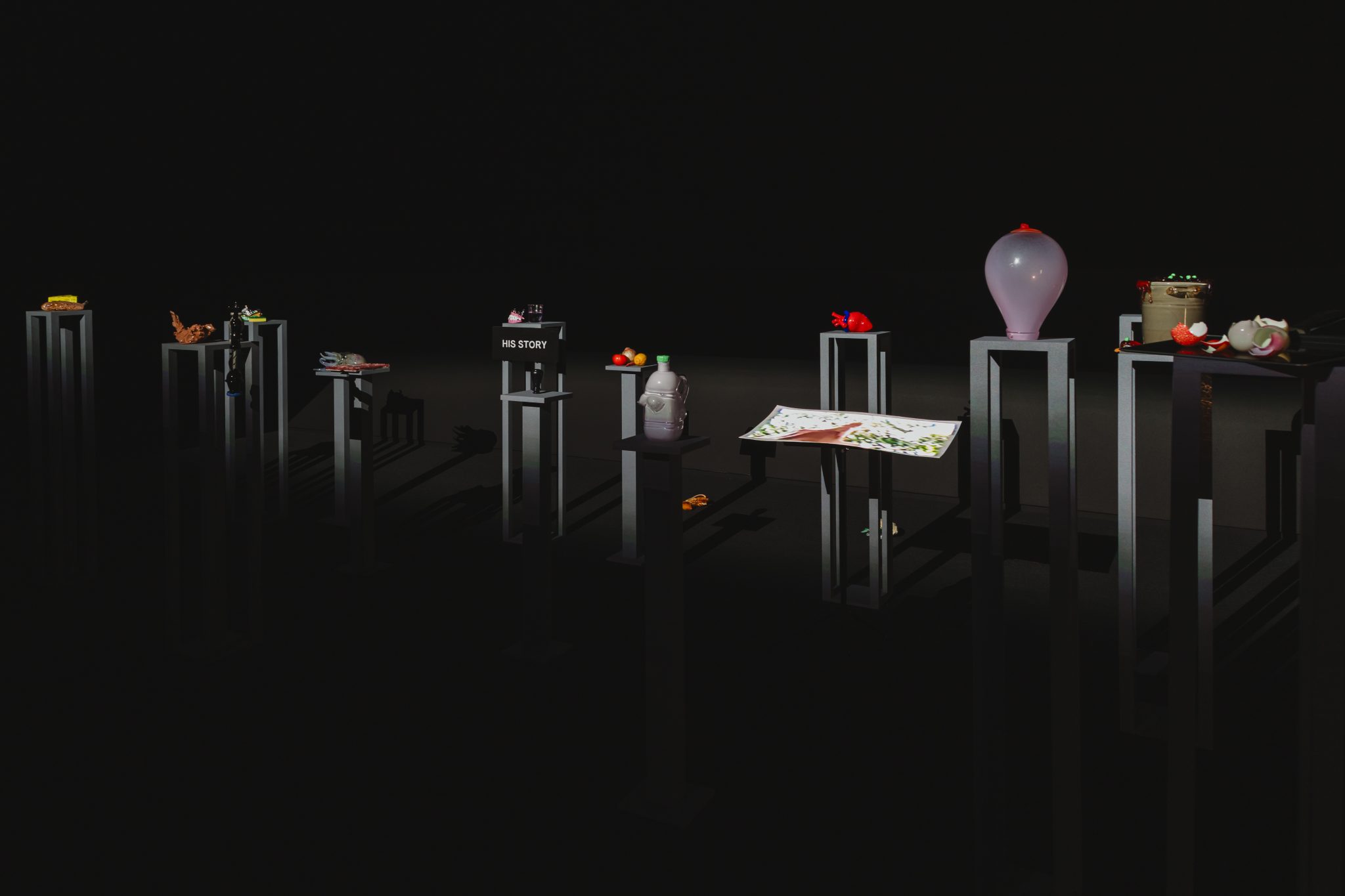A retrospective show, Oma-je at Remai Modern, Saskatoon, pays homage to our relationships with our elders
Laure Prouvost’s solo show is a selected retrospective of work from the last decade, the French artist’s largest North American show to date, and, as its title suggests, a homage to our relationships with our elders. A womblike accumulation of red curtains leads to a room containing Four For See Beauties (2022), a projected video wherein sea creatures blend, in milky transpositions, with scenes depicting a woman nursing a newborn child. Here are oral satisfactions – the mother sucking a raspberry, the child sucking on her finger like a bonbon – under a soundtrack of slurping mouths and crying string instruments. Meanwhile a cherry-coloured glow emanating from behind the screen recalls how unborn babies experience light, filtered through flesh and blood; a rendition of the reproductive interior, in the key of carnivalesque populism: “Step right in!”, I imagine a fair-barker yelling, “relive the miracle of birth!”
Four For See Beauties is great art partly because it manages the improbable, juicing up the most relatable human subject with new life, without getting mired in self-seriousness. This achievement, within the context of the show, reveals the relative thinness of affect or imagination in works like Here Her Heart Hovers (2023): a pile of sand, topped with campfire wood, accompanied by a conch and a small fertility goddess, and strobe-lit like decorations at a high-school dance. Moving Her (2023) is better. Here, assemblages of bric-a-brac hang from wires attached to a ceiling track, roughly mimicking the room’s perimeter. When an attendant periodically pulls the sculptures through the exhibition, feathers, CDs, doilies, twigs, tin cans and spools of thread sparkle in the light of three other videoworks projected on hanging fabric, in which women commune with matriarchs on the rocky French coastline. Assembled en masse, the videos and the hanging sculptures meld into a swarm of deskilled creativity, suggesting that such an energetic, accessible, freeform artistic output might have as much, if not more, value than artworks that conform to traditional ideas of skill and authorship.

This implication is forcefully challenged by the presence of Prouvost’s best work here, Grandma’s Dream (2013), wherein that free play is amplified by rigorous formal structures and singular style. The video (according to the wall label) tells the story of a grandmother who ‘explores her own creativities and desires with humour and sorrow’. It’s easy to miss this important theme in what is also very much a dreamscape of disconnected imagery, unified by pure Prouvostian reverie. With its soundtrack of maudlin whispers, the video carves crystalline art from the rough stone of sentimentality. While Grandma’s Dream plays on a monitor hung on walls painted sizzling pink, the work in the following room is partially shrouded in black; End Her Is Story (2017) pays homage to the artist John Latham, for whom Prouvost once worked. In darkness, visitors see seemingly miscellaneous plinth-borne objects only when they are sporadically illuminated by spotlights, long enough for a person to form a full thought about any one object. The effect here – one keyed to Latham’s own work – is of a mind scattered and dazzled, and dazzled by its own scatteredness.
Oma-je at Remai Modern, Saskatoon, through 28 January
